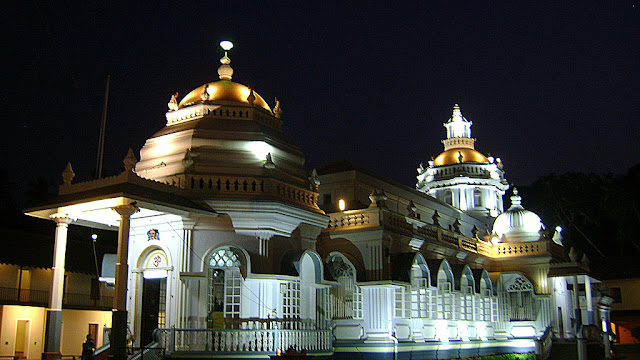Sabarimala Sree Dharma Sastha Temple, dedicated to Lord Ayyappa, is the most famous and prominent among all the Sastha temples in Kerala. The temple is situated on a hilltop (about 3000 feet above sea level) named Sabarimala in Pathanamthitta district, which is unique in many respects. The uniqueness of this temple- It is open to all, irrespective of caste, creed or religion. There is a place near the temple; east to Sannidhanam, dedicated to the Vavar (a sufi and friend of Lord Ayyappa) which is called 'Vavarunada', an epitome of religious harmony. Another interesting fact is that it is not open throughout the year. It is open for worship only during the days of Mandalapooja.
It is said that the pilgrims have to follow fasting for 41 days to cleanse their minds before going to Sabarimala. The journey to the temple is to be taken through difficult paths in the forest as the vehicles can go only up to Pampa.
Legend
It is believed that the deity of the temple was consecrated by Lord Parasurama at the foot of Sabari hills. It is believed that the deity of the temple was consecrated by Lord Parasurama at the foot of Sabari hills.Another significant aspect of the pilgrimage is that all the pilgrims whether rich or poor, literate or illiterate are all equal before Lord Ayyapa and all of them address each other as Ayyappa or Swamy.Sabarimala is believed to be the place where Lord Ayyapa meditated soon after killing the powerful demon, Mahishi. Another mythology says that its 'Parasurama Maharshi' who uplifted Kerala from the sea by throwing his axe and installed the idol of Ayyappa at Sabarimala.
To enter the Sabarimala temple, the pilgrim has to pass Pathinettampadi (holy eighteen steps). The holly eighteen steps that lead to the shrine have been figuratively called Ponnu Pathinettampadi, 'Ponnu' being an epithet to denote the holy touch of lord's feet. But now 'Ponnu' has become literally true because the steps have been covered with Panchaloham. Each of these eighteen holy steps represents a desire one must conquer in life, it is believed. Only those who observe 41 day's of austerity as ritual can only carry erumudi and can climb these steps
.

















































